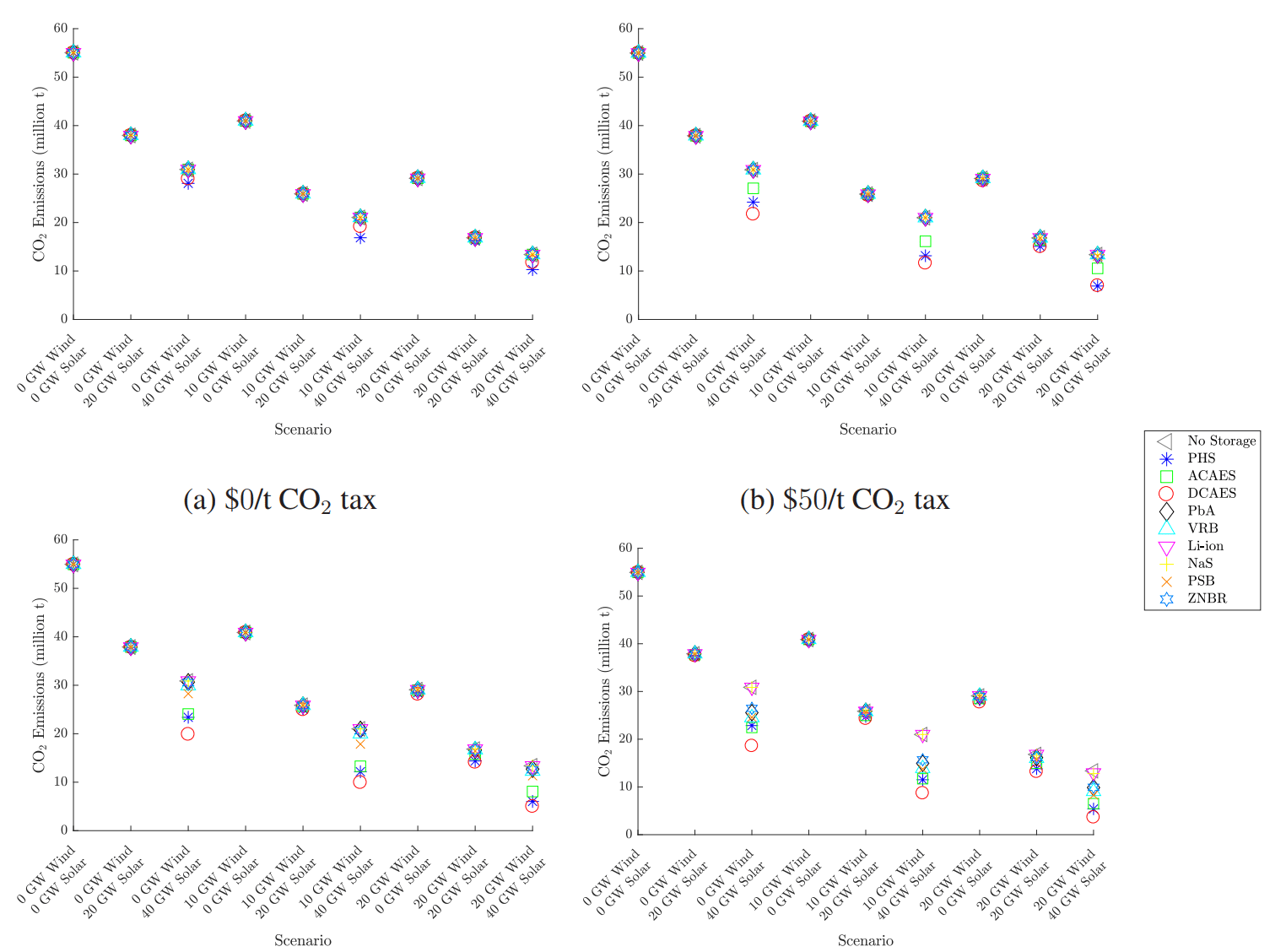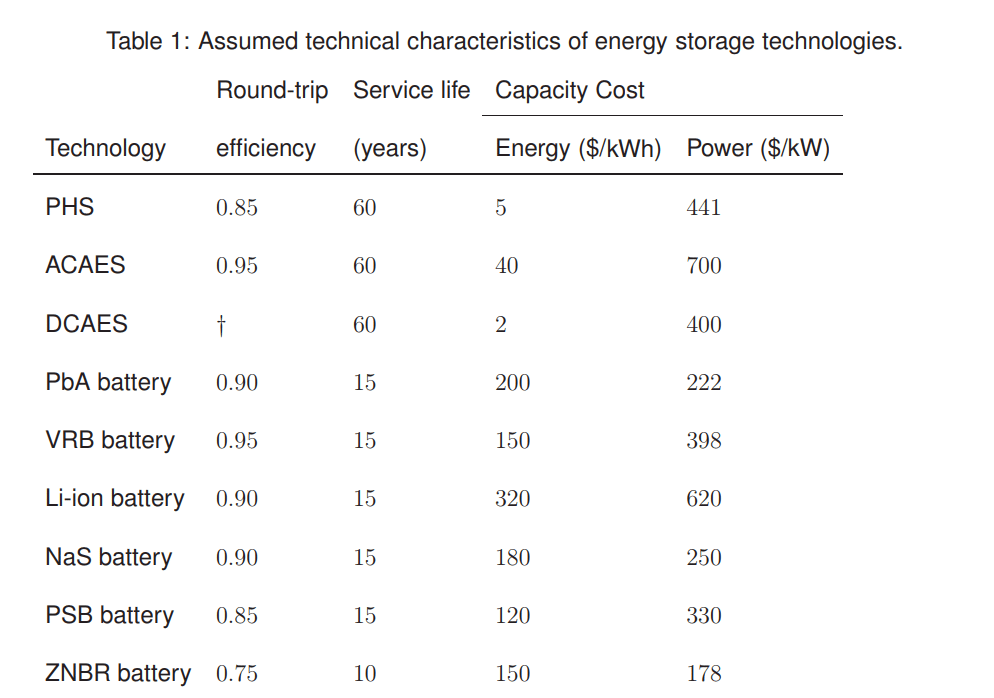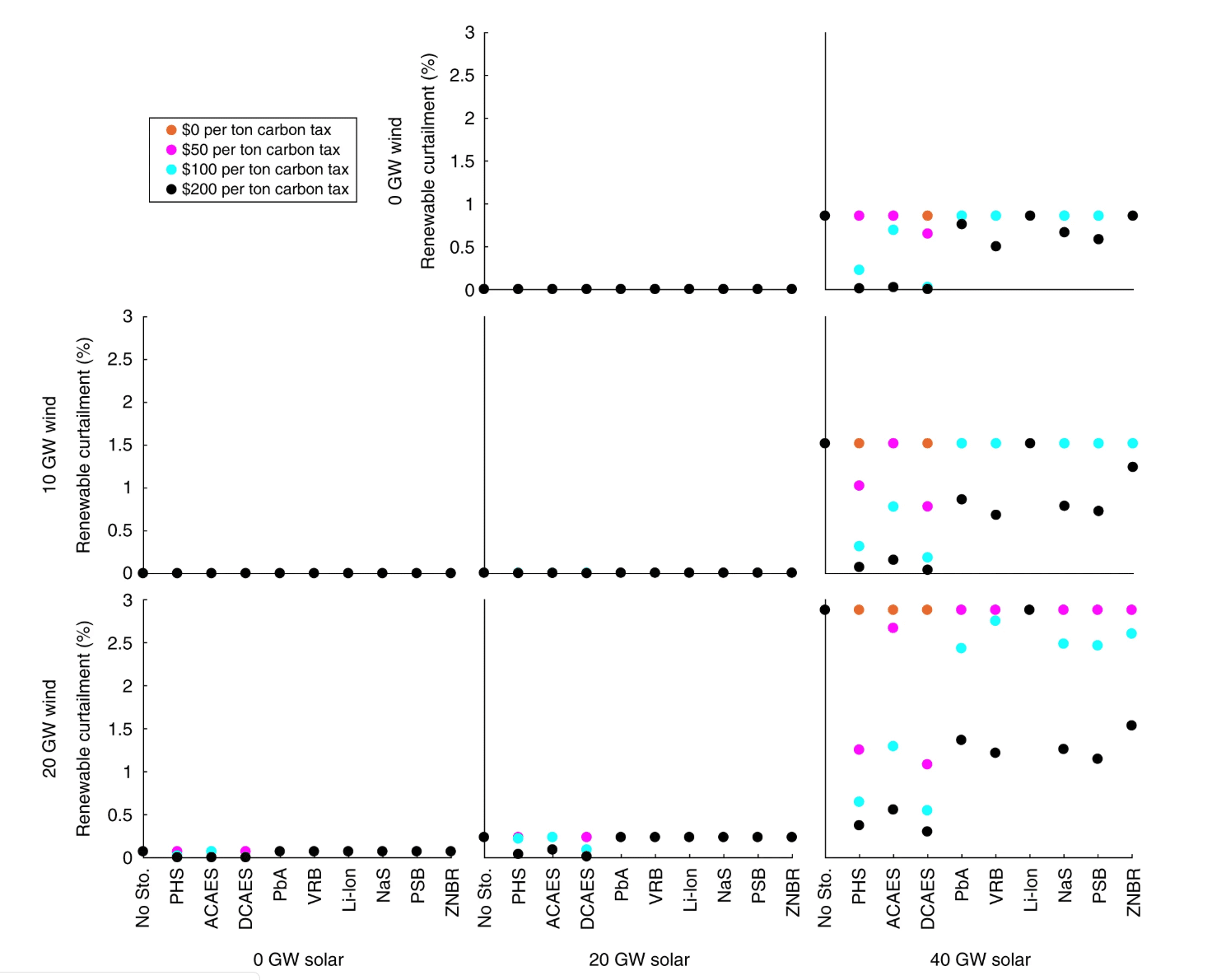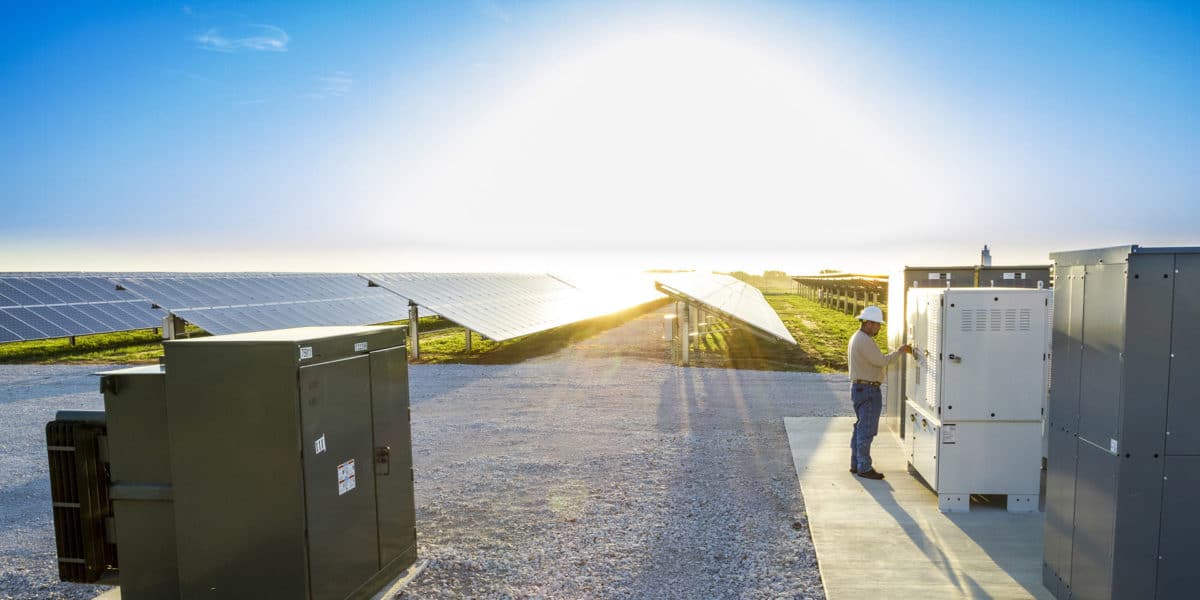A research paper, The role of energy storage in deep decarbonization of electricity production, by University of Michigan scientists mixes energy storage types and pricing, carbon taxes, unique power grids in Texas and California, and adds 60 gigawatts of wind and solar to to model CO2 reductions and curtailment in economic markets.
The biggest finding of the research suggests that California will much sooner gain benefit from energy storage before Texas will because of a mix of flexible and inflexible generation, and types of renewables deployed. In California, the 60 GW deployed would lower emissions 72% – while in Texas 54%. Adding the carbon taxes and energy storage would make emissions fall 90% in California, but only increase to a 57% drop in Texas.

The above chart of the California power grid shows how the state would progress with various deployment volumes and carbon tax amounts. Of note is that the pure wind deployments see all types of energy storage bunch together, while the solar power deployment takes advantage of different energy storage types different based directly on those technologies price.
The researchers noted the pumped hydro storage was economically viable in most all situations modeled, while lithium ion energy storage moves the needles the least due to its high price – even though it has some of the best technological attributes. Much research suggests that pumped hydro is a financially competitive resource, but deploying it is another question. As well, the researchers note that the models are sensitive to falling prices of lithium ion batteries – and the energy storage marketplace suggests pricing below the modeled values (below chart) might already be available to developers for near term delivery.

The research starts with data from 2010-2012, noting that the two states have gone different paths with their respective renewable deployment plans. California of course going solar heavy, with wind about a third to a quarter of the capacity deployed. Whereas, Texas up until recently had almost exclusively deployed wind. The authors of the paper note that the current volumes deployed line up with situations they analyzed, and that California specifically is approaching a point where energy storage is economically viable to mitigate curtailment without a carbon tax.
The modeling of Texas suggests that until solar power starts to reach toward 40 GW of volume deployed, energy storage might not be economically viable (below image). Also noted is it really would take until carbon taxes reached above $100/ton before other storage technologies have a chance to compete – except of course pumped hydro, which isn’t to be found much in Texas.

The report also notes that for energy storage to become financially viable in any situations, there must be greater levels of wind and solar penetration driving the energy storage needs. NREL research projects that as solar power breaks 10% and 25% penetration levels across the United States, energy storage has an up to ~144 GW / 728 GWh opportunity to replace 261 GW of gas peakers.
This content is protected by copyright and may not be reused. If you want to cooperate with us and would like to reuse some of our content, please contact: editors@pv-magazine.com.









By submitting this form you agree to pv magazine using your data for the purposes of publishing your comment.
Your personal data will only be disclosed or otherwise transmitted to third parties for the purposes of spam filtering or if this is necessary for technical maintenance of the website. Any other transfer to third parties will not take place unless this is justified on the basis of applicable data protection regulations or if pv magazine is legally obliged to do so.
You may revoke this consent at any time with effect for the future, in which case your personal data will be deleted immediately. Otherwise, your data will be deleted if pv magazine has processed your request or the purpose of data storage is fulfilled.
Further information on data privacy can be found in our Data Protection Policy.